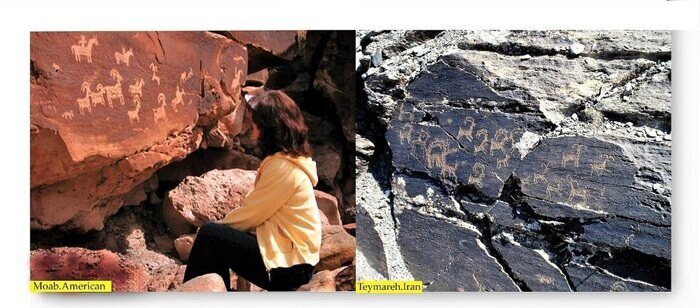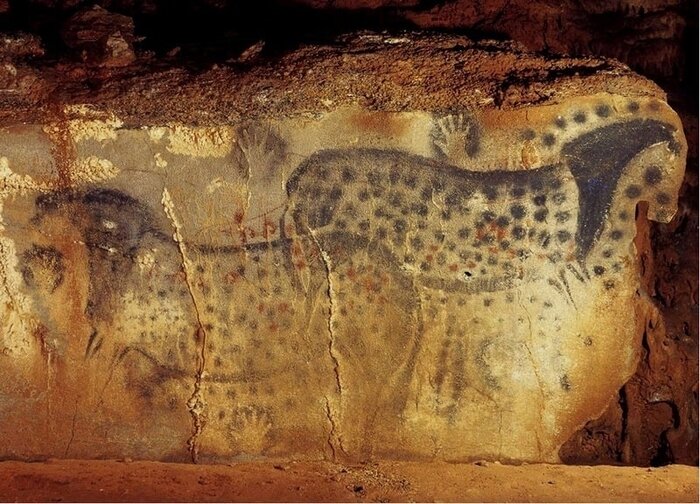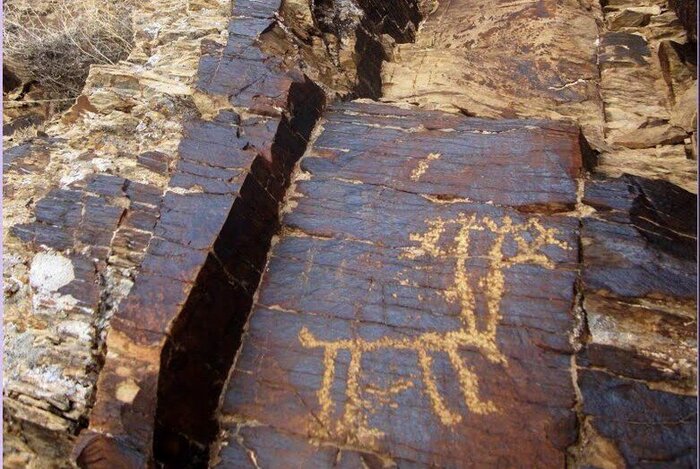Mohammad Naserifard told IRNA on Tuesday that these finding are being presented for the first time.
Naserifard said after years of research on ancient painting in the caves and mountains of Iran, some fascinating achievements have been gained that are nationally and internationally important.
He said it was the first time that Iranian petroglyphs and cave paintings were compared with those of other parts of the world.
The similarity in form and messages between petroglyphs of ancient people of Iran and those of America unravel numerous lost rings of human history and art, he said.

The date of the paintings of appaloosa horse of the native Americans with the paintings found in Sistan-Baluchestan, southeastern Iran, which are 11,000 years old. The same paintings are seen in a cave in France.

The French had claimed that that kind of horse had just lived in Europe. This is while the 11,000-year old paintings of Iran show women riding the legendary horses of the American Indians, he said.
The Iranian archeologist added that the recent research conducted on the petroglyphs of Teymareh, central Iran, showed that ancient Iranians have migrated to America as well. Belgian Professor Marcel Ot had already reached in his studies that Europeans have Asian roots.
Naserifard said that the migration has taken place through the Bering Strait, between northeastern Asia and northwestern America of through the Arctic Ocean 10,000 BC.
The paintings found in Khomein, central Iran, show the same feather that the Native American wear on their heads, which signifies that the people of two cultures have the same roots. They show that ancient Iranians have migrated to the Americas thousands of years ago, he said.
He went on to say that in the decade-long research, Iranian archeologists encountered signs and symbols in the petroglyphs and cave paintings that had been seen in ancient clay tablets of Jiroft, southeastern Iran, and Shoosh (Susa), southwestern Iran.
The same symbols have been discovered in the Native American habitats in Kentucky. For example, pictures of ephedra plant that symbolizes eternal life. The same symbol with the sane divine meaning has seen in Central Asian Turks and Caucasus.
In the 10,000-year old petroglyphs of Teymareh, are seen the same spiral paintings as those of Red Indians of New Mexoco, Iota, California, and Nevada.
Semiotically speaking, spiral symbols the beginning, development and culmination of entities, an idea which has most probably been taken from Iran to the Americas, he said.
The winged man paintings were first discovered in Iran. In the beliefs of ancient Iranians, they wear savior angels that helped people in difficulties. The paintings date back to 11,000 to 2,700 years ago, he said, adding that images similar to the ones found allover Iran are seen in Yellostone National Park in Wyoming, the US.
The Iranian and the American images are so alike that one may think they have been painted by the same artist 12,000 years ago, Naserifard said.
We believe that the same paintings mean that the two people had the same beliefs, and inasmuch as the Iranian ones are older, they mean that the ancient Iranians have migrated to America and have taken their beliefs with them.
The most common petroglyphs of Iran are images of wild goats in different styles. They are also seen in ideograms painted or carved by Native Americans in Nevada, California, Iota, Arizona, and New Mexico states. They are so similar that you may think have been painted by one artist in thousands of years.
Mythologically speaking, wild goats are angels in disguise. It is fascinating that Native Americans have mostly painted wild goats with the same message, he said.
He said these were just a few examples of the similarities. They are by no means over.
Comparison has a high place in anthropology; there are images of people while worshipping both in Teymareh and New Mexico, which are undoubtedly not accidental. They are ideograms.
The pictures of two wild goats with a smaller one between their horns are of great importance too (17,000 to 1,000 C). One of them is in Iran, the other one in Iota, the US. They have the same message. Similar figurines, dating back to Bronze Age, have been found in Lorestan, southwestern Iran. They made them and attached to the clothes of women in labor so that the savior angel would help them. Traces of the same belies are seen in the paintings on the walls and mountains near ancient Native Americans’ habitats.
Lors of Iran have a kind of sleeveless garment named Choogha that is woven with thin strings made from wool. The traditional patterns used on Choogha is used by Native Americans too, which is amazing.
Rock arts, petroglyphs and pictographs are documents that acquaint researches with the cultures of different places and times. They talk though the language of symbols and images, which has been the same all over the globe.
9417**2050
Follow us on Twitter @IrnaEnglish
